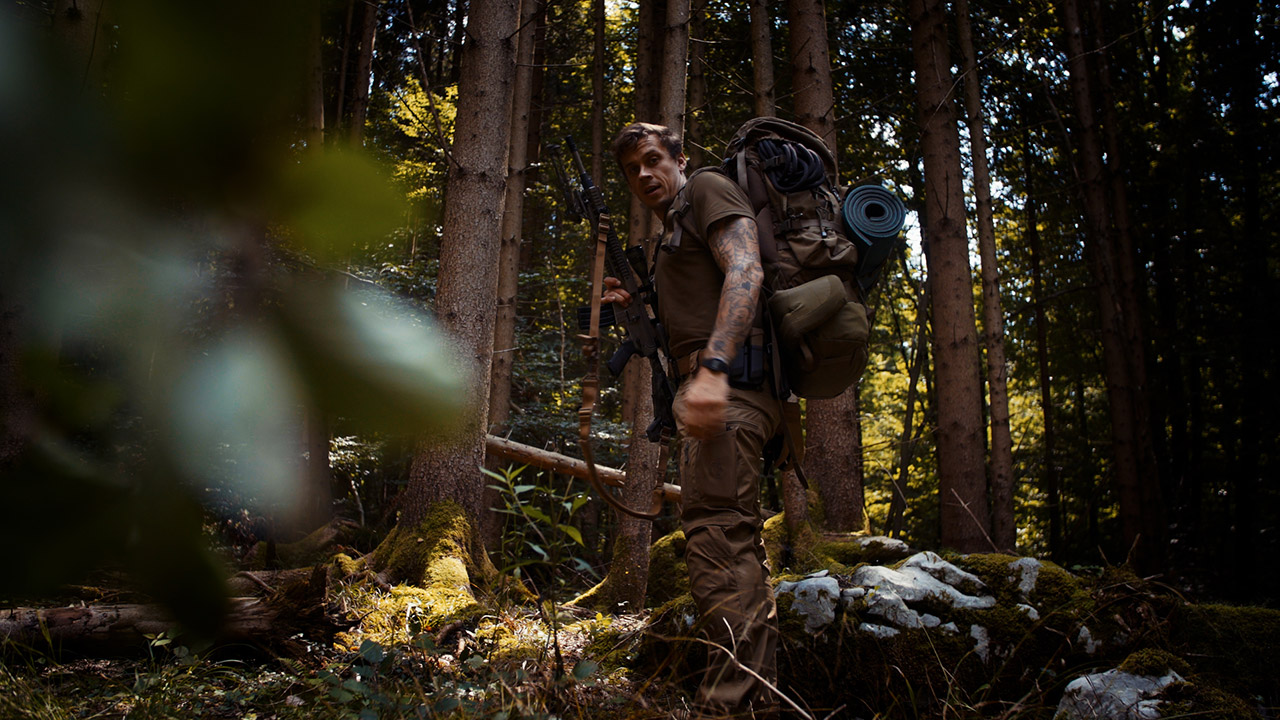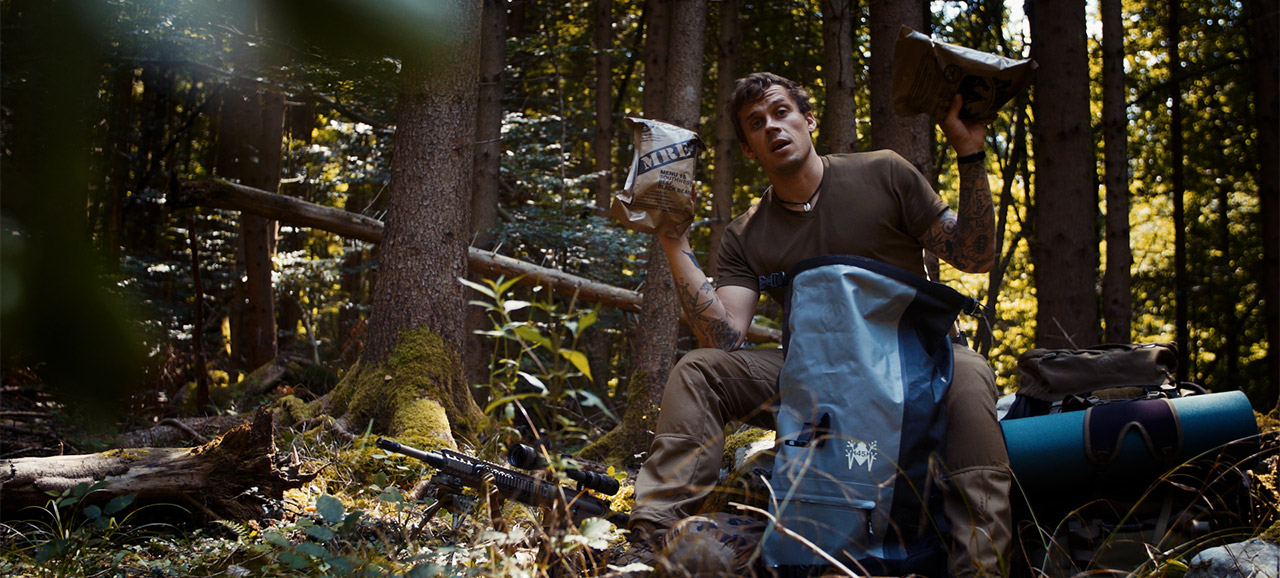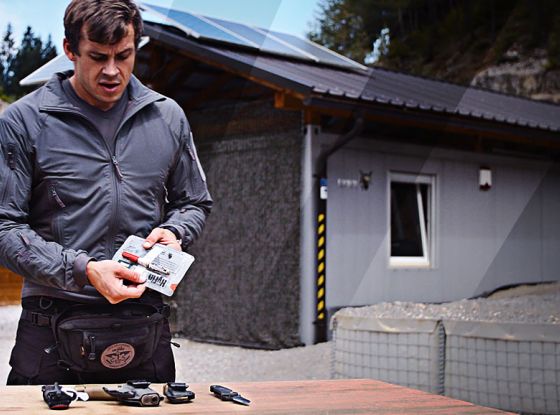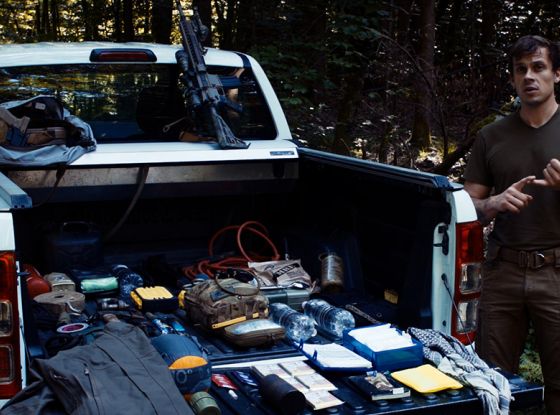Good planning is the key to having a hideout that increases your chances of surviving a crisis, disaster, or other major bad event. Your hideout should be situated in a remote spot, yet not too far from home. And it should contain the emergency gear you think you’ll need most to see you through.
In this blog post:
Introduction
When it comes to survival hideouts, you don’t need a full-blown, stocked-to-the-max “doomsday” bunker to ride out the fall of civilization. You should be able to get by quite well with a simple hideout, one that offers protection and distance from rioting and looting. To have an empty hideout is better than to have none at all and find yourself wishing for one in the midst of a dangerous situation.
The best strategy is to have multiple hideouts spread over different locations so that, if necessary, you can fall back, defend your ground, and hang on in survival mode for a couple of days or even longer.
The multiple-hideouts strategy also lets you have one refuge for each of the scenarios with which you expect to be confronted and then be able to go to that particular hideout if the situation calls for it (this approach makes it easier for you to adapt to the immediate circumstances and it will give you options in the event one or more of your other hideouts is rendered inaccessible by fast-moving events).
Things to Consider for Your Hideout
Lets go over the basic stuff. You’ll already know most of this from the training you received and from the experience you’ve racked up as a LEO or as a military operator. But if you’re new to survival and are one of those preppers who’s still wet behind the ears, then you’ll appreciate these next tips.
Tip 1: Choose higher ground.
Ever seen the “Star Wars” movies? Then you know it’s always good to be on the high ground. The reason is high ground is simply easier to defend. It also gives you a better field of view. And, there’s less chance you’ll be swept away in a flash flood.
Tip 2: Locate your hideout near a water source.
Don’t wait until the first time you use your hideout to go looking for water. Do that before you settle on a location. Thoroughly scout the surroundings for water sources that are easy to get to by foot. Draw a map so you can find them again months or years later when the day arrives that you need to hole up in your hideout. Also make sure the water is safe to drink; if it’s not, make sure you have a way to filter it.
Tip 3: Locate your hideout in dense vegetation.
Thick vegetation makes it easier to efficiently camouflage your bolthole so that it blends in with the surroundings. You don't want a shelter that sticks out like a liberal at a gun rally.
Tip 4: Have multiple escape routes.
The more ways available to escape your lair, the better your chances of survival. If you have only a single way out, it becomes too easy to trap you inside—which means that, when the shite hits the fan, you’re basically looking at this place becoming your last stand. Multiple ways out—and, conversely, multiple ways in—is key to your security. But, by the same token, don’t overdo it.
It’s possible to have too many routes in and out. Just as there’s too much of a good thing, too many routes creates too many opportunities for unfriendlies to jump you from behind you (which can happen most easily when you log onto Facebook to update your status to single). A way to minimize your risk of being taken by surprise is make sure every escape route is well concealed and difficult to discover.
Tip 5: Don't hide in a hole in the ground.
People fleeing disasters do a lot of nasty stuff. For example, if they stumble upon a hole in the ground and they think (or know) you’re hiding in it, don’t be surprised if they pour a bunch of petrol down it and toss in a lit match to set your arse on fire.
Another consideration when deciding stuff about your hideout is whether you envision staying in it while you wait for your family to join you or whether you think you’ll instead return home in a few days to go in search of them. If you plan to go home, first be sure to reconnoiter the area to make sure the coast is clear.
The bottom line: knowledge is power, and you can increase your power by good planning. Know where the local hospitals, clinics, veterinarians, and medevac services are located and situate your hideout accordingly. Having a plan is a good start. But it’s only that, a start. You should always be improving it.

What I Keep in My Own Hideout
Now to the stuff that should go in your hideout. There’s actually not a lot to it. You don't need to live in it for decades, so there’s no need to stock it as you might were you building a concrete-reinforced bomb shelter to shield you from radioactive fallout in the wake of a global thermonuclear war. All you really need is a concealed place away from people where you can stash some watertight containers holding enough MREs and drinkable water to last you a week, maybe a bit longer.
Essential items for your hideout:
MREs
Water
Warm sleeping bag to prevent hypothermia
These are must haves because you can’t survive long without them.
Also, essentials for your hideout should not be things that cost a lot of money. If you concealed them properly, your essentials should remain hidden and available until the day you need them.
But, because they’re outdoors, there’s always the chance someone—a hiker, a hunter, an escaped convict, a couple of randy frolickers—will happen along, discover the hidden trove, and enjoy a huge banquet at your expense.
Or, maybe there’ll be a big windstorm that knocks down a tree and sends it crashing right down on top of your stash. So, if you didn’t spend a lot of cash acquiring these essentials, you’ll be able to buy more to replace what you’ve lost due to theft, destruction, or even spoilage.
That said, your efforts at staying alive and out of harm’s way can go a lot smoother if you bring a survival backpack from home or one that’s kept in your car.
Here’s the list of what I make sure I always have in my own hideout:
Knowledge
Sleeping bag
Waterproof bag
Map showing me how to get to a secondary hideout
Ability to build a community
Filtration device
Camouflage
Multiple avenues of approaching problems
I’d also recommend you bring combat medic gear from your car and/or home. I talked about these kits previously. See my discussion of gear to keep in your car and of gear to keep at home. These are items good to have handy in any emergency situation.





